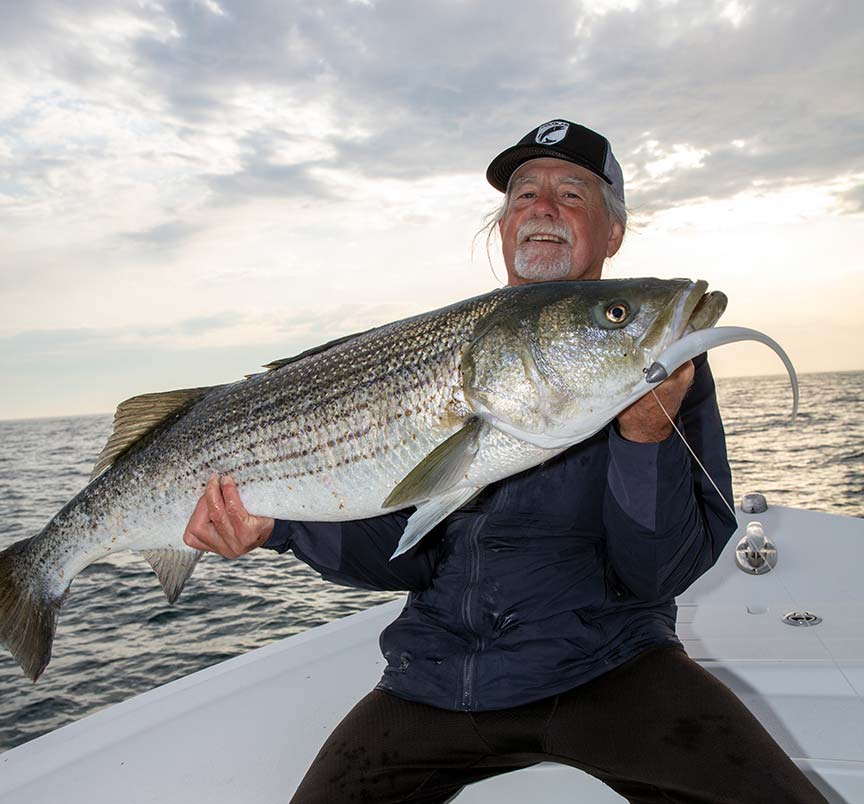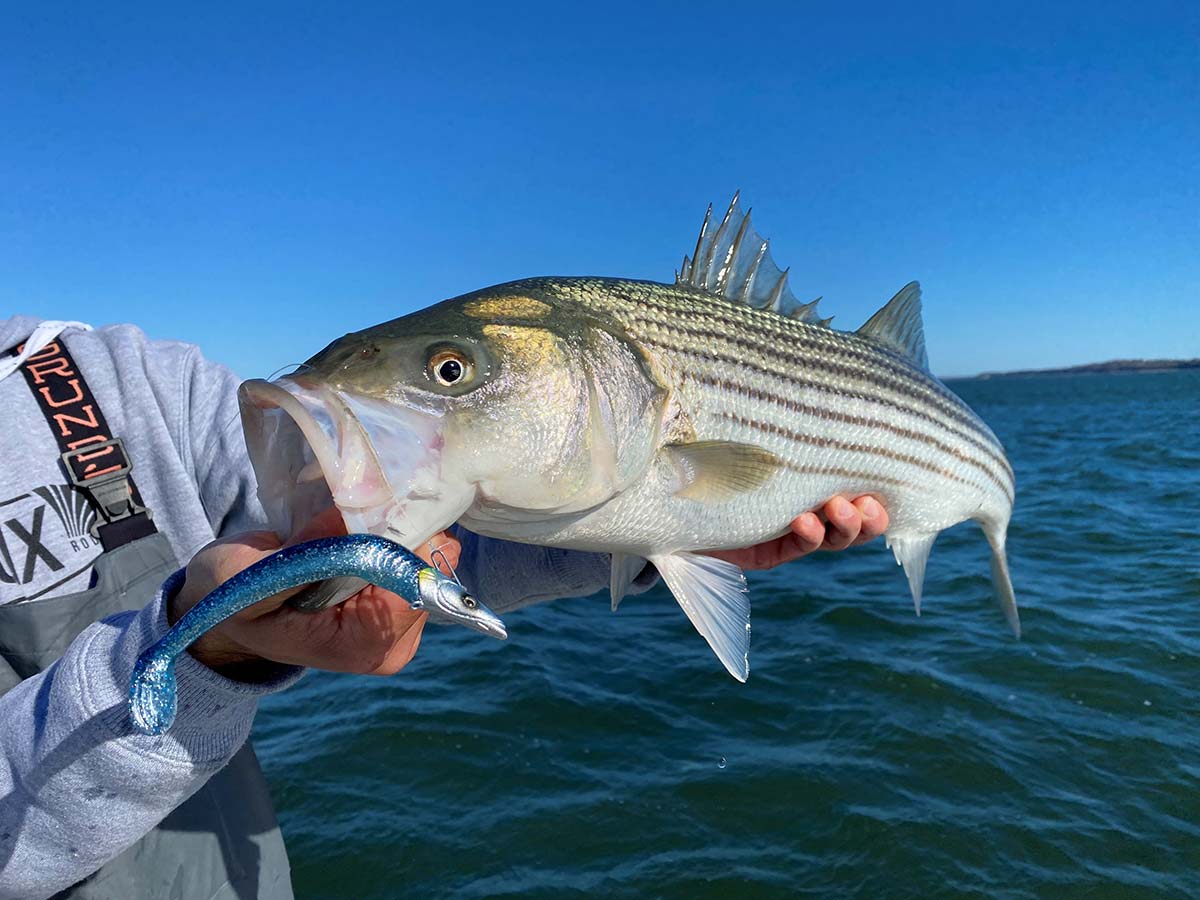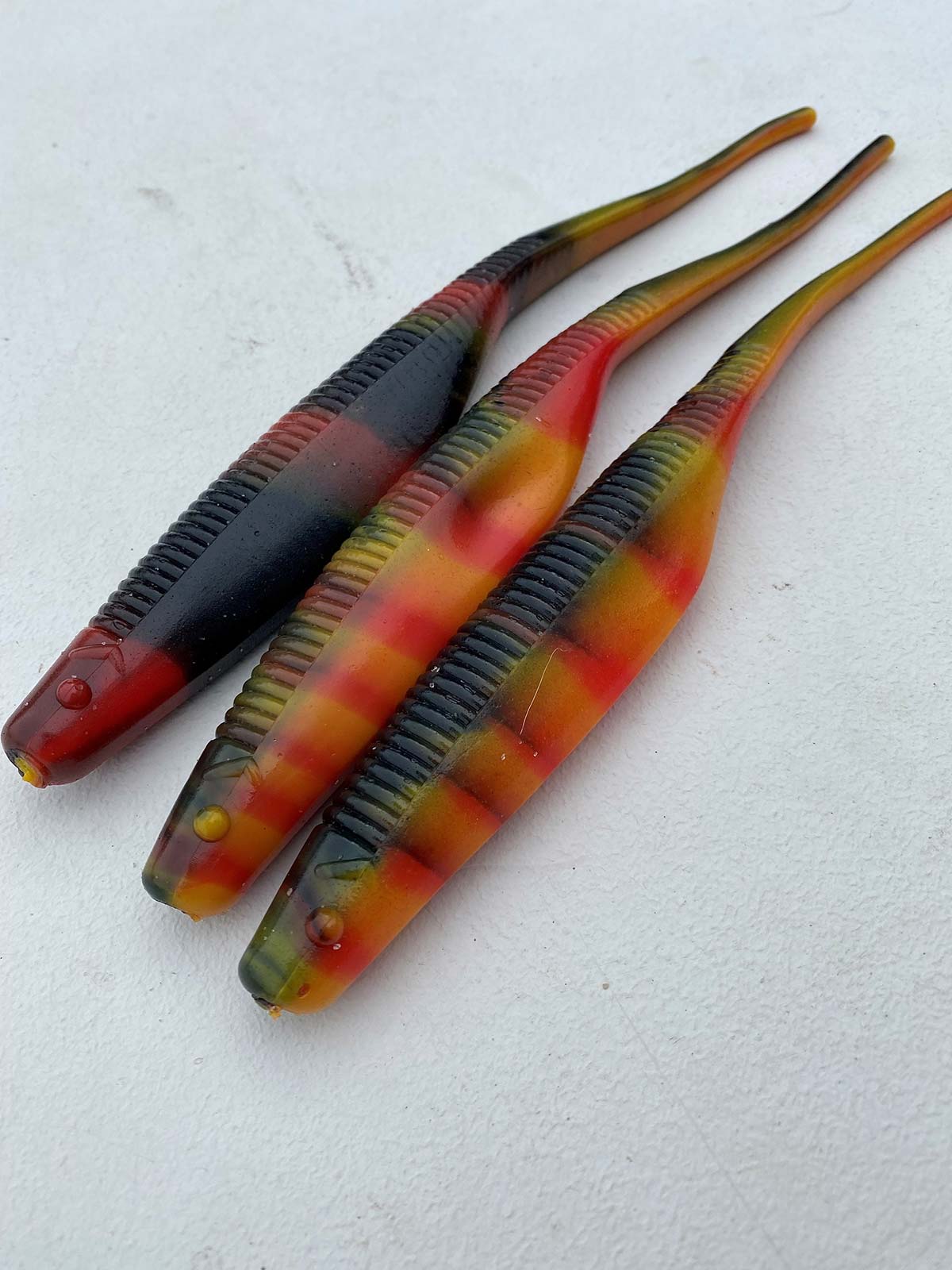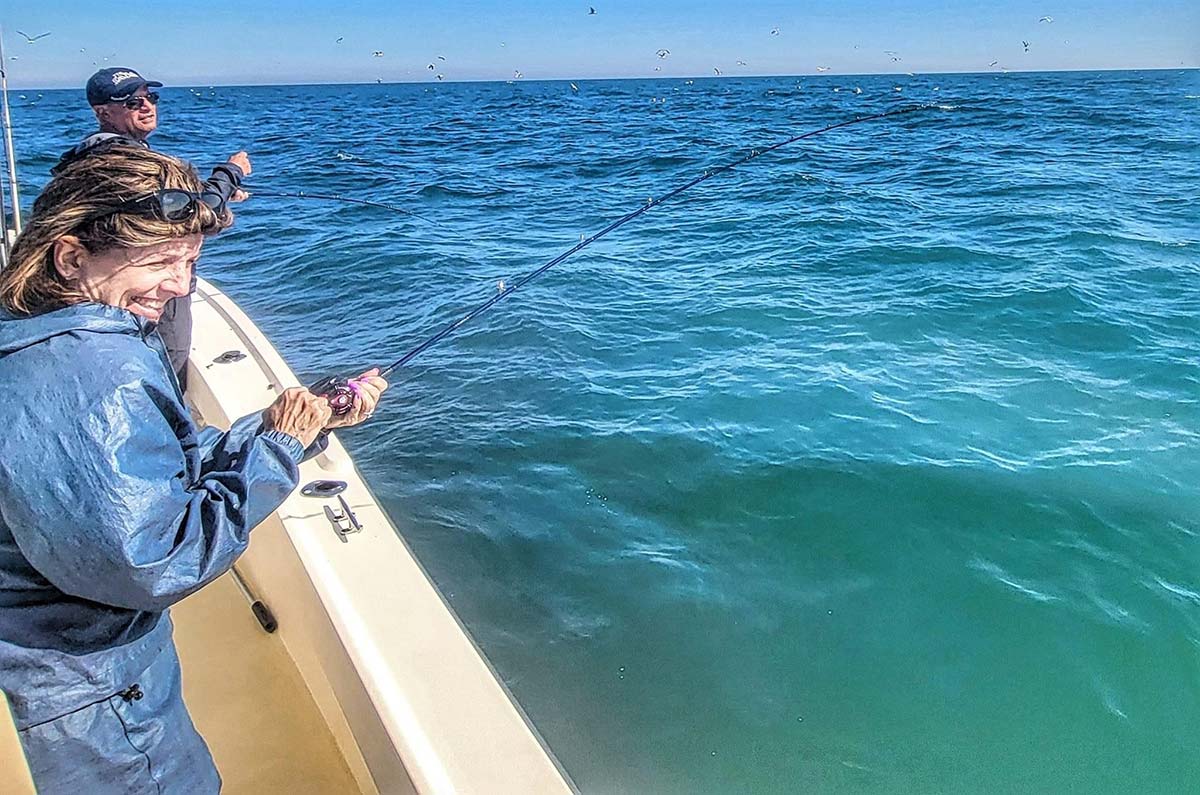
Profile and action make a big difference when the sand eels reappear.
Two seasons ago I learned to bucktail from Capt. Savio Mizzi. Last year I continued my instruction, but also fished solo a lot this way too. This season we were thrown an unanticipated curve. As opposed to the previous year, this year, when the big striped bass arrived at the rips of Montauk and Block Island in May and early June, they wouldn’t hit the traditional bucktail with soft plastic curly tail trailer. No matter what presentation we used, hooking up with the clearly marked fish was difficult.
We soon began to suspect that the reason for this lockjaw was the presence of thousands upon thousands of sand eels which had shown up along with the bass. Sometimes these 5-inch creatures filled the fish finder’s screen from top to bottom. The big stripers had become selective to this long and thin bait, disregarding everything else. Now what to do?

Trail And Error
We tried diamond jigs, a typical sand eel remedy, but these bass flat out refused them. On some days, the diamond jig with surge tube tail worked well, with some big fish caught, but this worked only a small percentage of the time. A single soft plastic curly tail threaded on the lead head, sans bucktail, was ignored as well, as were soft plastic paddle tails.
We had to experiment after initial failure. Sand eel jigs like the big Hogy Epoxy Jig worked somewhat, but we really didn’t hit well until we tried the Mega Shad – a suggestion from Tight Lines Tackle shop owner Kenny Morse – who told us this soft plastic consistently worked well at Block Island. The bait is long and thin with a “rat” like tail, which offers good action. It really doesn’t look like a shad or herring either. Put it close to the bottom on a 1-, 1-1/2-, or 2-ounce weighted head, along with some angler induced strike triggering action and you were in good shape. This lure worked consistently well from just after the hordes of sand eels arrived at the end of May, to the time the big stripers, along with the sand eels, left on around the 20th of July. Nothing but nothing beat this type of lure, for numbers or size of bass. I caught stripers to 40 pounds and Savio (and some of his clients) got numerous bass of 40 to 50-pounds plus. It was so effective that we caught many fish like this even in the middle of the day under a hot summer sun with a clear blue sky – not just in the more commonly recommended low light periods.

A Worthy Snack
There was another long thin soft plastic, offering tremendous action, that worked even better for me than any other soft plastic and that was the Fish Snacks Super Snax – a creation from my friend and Cracker Jack lure designer Alex Peru. It’s interesting that even if the sand eels were predominantly 5 inches long, effective soft baits 7 to 10 inches long worked really well. Alex himself caught a 47-inch, 38-pound fish that ate an Albie Snack (on a weighted head), the lure he is most famous for, and that was 5 inches long too. Smaller lures than the size of the “naturals” were simply not effective.
Another interesting observation was at times there were different size sand eels around. Anytime they were 3-1/2 or 4 inches long the big bass, those 20 to 50 pounds plus would not be around. When the big bait schools of 5-inch plus launces were there, those big fish would be present. Five inches, not just for sand eels, but for any baitfish, appeared to be an important line of demarcation. For some reason, below this length you only interest smaller stripers (to maybe 20 pounds or so), but at the 5-inch length or longer you attract the big bass – 25 pounds to as big as they come.
Another excellent option for mimicking the sand eels that frequent Montauk is the Savage Sand Eel. This lure is a spot-on match to the ones swimming around the point in the summer and fall. The larger version of the lure is actually a staple in the Cape Cod Canal but for Montauk, the smaller and lighter 5- or 6-inch model in weights of either 4/5 or 1-1/2 are perfect for getting down into the rips with the correct profile size. The unique shape of the jig head on the lure also helps this slender plastic cut through the water column a lot easier.

A Gut Feeling
Even with the right lure big fish were not necessarily that easy to catch. You usually had to be right near the bottom. Often the big fish would show up on the finder in schools with big upside down “V”s from the bottom up to a few feet from there on the screen. Sometimes you would mark nothing at all but the bass would still be there. I came to the conclusion that even if you find nothing on the screen in a likely area with bait, don’t leave. Still give it a try. In any case, regardless of the situation, it was paramount to find the correct presentation to get them to hit.
Sometimes that presentation changed day to day. At times it even changed during the same day. You had to be aware of this as you fished. Usually a good presentation was a quick snapping of the lure up with the rod tip and then letting it drop. You also had to find the right cadence, distance of “lift”, and length of the drop too. Most of the time you were triggering the strike with that sudden lure movement (same as with a bucktail). My soft plastic (Super Snax) was most effective when it had the liveliest action I could give it. With this same lure you would have different actions with different weight heads, even with the same presentation.
| TUNED TACKLE AND LURES |
| The author used regular bucktailing tackle, medium-heavy power freshwater bass baitcasting rods paired with baitcasting reels that had a 300-yard capacity of 15 to 20-pound braided line (in case of very long runs with very big fish, small tuna as well as stripers). The braid was connected to 5-feet of Jin Kai 50-pound monofilament leader, and long thin soft plastics on 1, 1-1/2, or 2-ounce weighted heads. They didn’t need more weight than that, even fishing down to 70 feet of water in current. Any heavier wouldn’t result in the same lively lure action that will trigger strikes. This makes a huge difference in lure effectiveness. |
I found the “ideal”, and most productive action by experimenting with different jerks and pauses (different presentations) while looking at the lure 2 feet under the surface at boatside and then copying that same presentation with the lure near the bottom. Now, you could catch fish with this lure at any depth, but we caught noticeably more and bigger fish fishing close to the bottom. Nothing Savio hasn’t preached for years.
We fished the exact same rips we fished with the bucktail the previous year. So go out to your favorite places, deep water rips, bars, humps, or drop-offs, and fish. When the bass are in and they’re keying on big sand eels, these lures and methods work day or night.
So when the big sand eels show up along with the big stripers and those bass get selective, don’t forget to bring out the big, thin soft plastics. Fish them with as much action as you can give them, stay near the bottom, and hang on!




